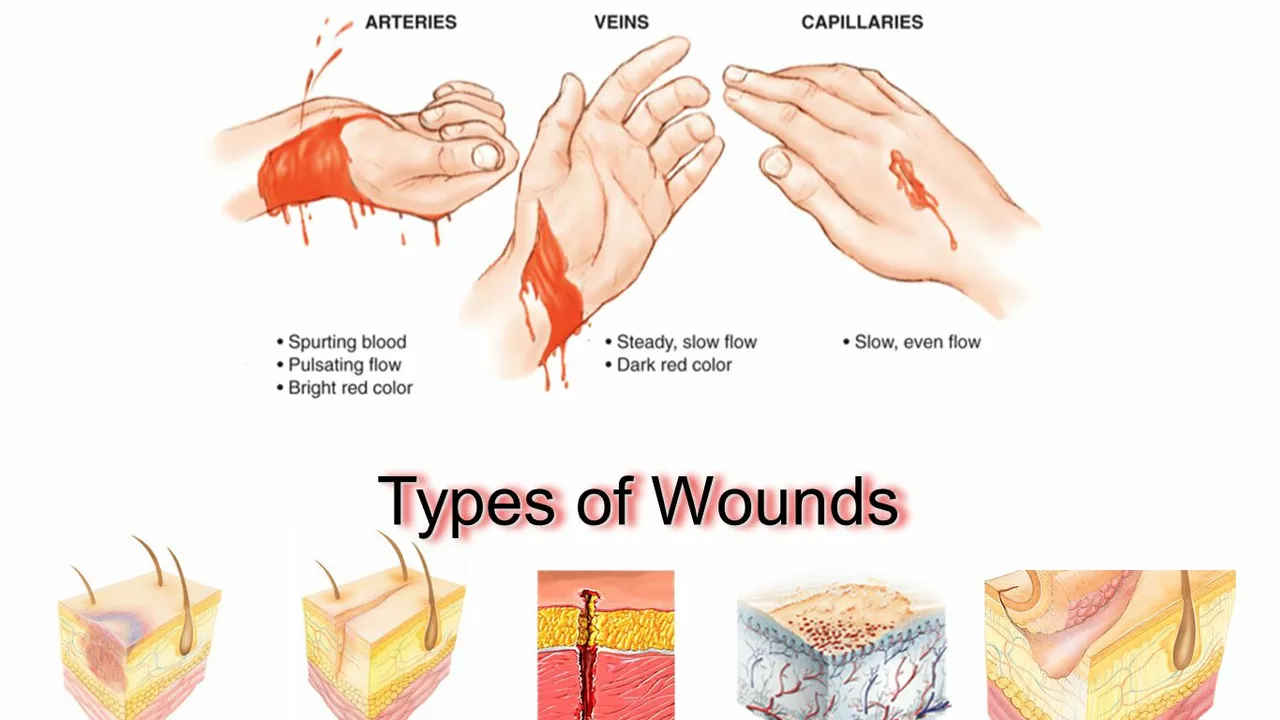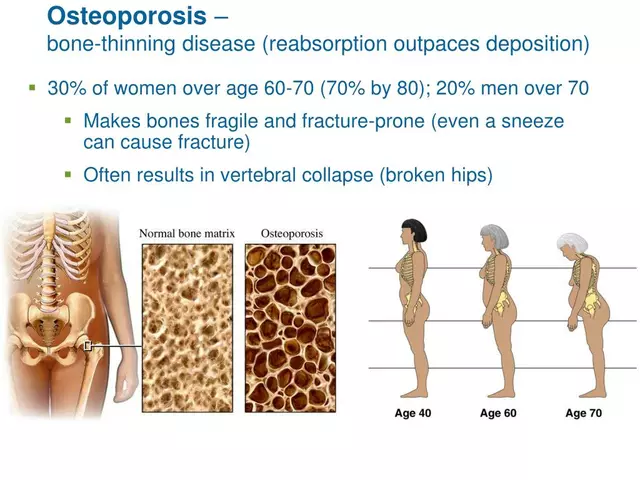Understanding the World of Sprains
Allow me to introduce you to one of the most common injuries that often plague us - sprains. They’re sneaky, really sneaky. Just a small misstep and bam! You’re lying on the floor clutching your ankle or wrist. It's like they lie in wait for the perfect moment to ambush you. But they were never on my radar until, well, I married Seraphina, who exercises as if her life depends on it. Her sprained ankle last December got me thinking in this direction, and so I decided to arm myself – and you, my readers – with knowledge, the greatest weapon there is.
Know Your Sprains: Identifying the Fraudsters Within
Sprains, my dear readers, are fraudulent injuries that tend to trick you into believing you've broken a bone. Yes, you heard it right! This is how they make you dance to their tunes. A sprain is essentially an injury that occurs when the ligaments, the fibrous tissues connecting our bones at the joints, are overstretched or torn. You might have sprained an ankle by taking an awkward step or twisted your wrist when you tried to break a fall. While sprains can occur in any joint in your body, they are most common in the ankles, knees and wrists.
Now the interesting part is that sprains have tiers. Much like the infamous bosses at the end of each gaming level, sprains increase in their severity from Grade 1 to Grade 3. The Grade 1 sprain is the easy level where your ligaments are stretched but not torn. The Grade 2 sprain, however, has a few of your ligaments torn but not completely. And then finally, the big boss, the Grade 3 sprain where the ligament is completely torn, breaks in the scene. Trust me, you don't want to reach this level!
Playing Detective: How to Diagnose a Sprain
Okay, picture this: You're playing a friendly game of basketball with your mates and then you take a wrong step, tumble, and then there's the pain. Your ankle has probably become the latest casualty. How do you know if you've sprained it or worse? Well, the hallmark symptoms of a sprain include swelling, bruising, pain, and inability to move the affected joint.
In most cases, you yourself can tell if it's a sprain or not. Yes, you don't need to be Sherlock Holmes to figure this one out. If you have a Grade 1 sprain, you'll see some light swelling and experience a bit of pain. A Grade 2 sprain would have your joint look all swollen and you'd have a tough time moving it. The Grade 3 sprain, the one you should be afraid of, will make your joint look like a balloon and the pain – well, let's just say, you'd rather not experience it.
Doctor, Not Detective: When to Seek Medical Help
Now, as any responsible adult would tell you, severe sprains could need medical attention, of course, unless you find the idea of limping around for weeks on end enticing. Jokes apart, if the pain persists, the swelling doesn’t go down, you can’t move or bear weight on the joint, or if you have a fever, you should see a doctor immediately.
A trip to the doctor's office will lead not just to pain relief, but also an accurate diagnosis. Special imaging tests like X-rays, an MRI, or ultrasound may be used to confirm the diagnosis and assess the extent of your injury.
So, there you have it! That's your ultimate guide to sprains. It's funny, isn't it, how something so common, something that could have hit us multiple times in our lives, is still not something we fully understand? And hey, I'm not just preaching here. I've done my share of spraining, all thanks to my high-spirited better half who threw an impromptu wrestling match, resulting in my first ever ankle sprain. Take it from a fellow sprain victim – knowing about sprains makes a huge difference when you experience one. Plus, you'll sound super cool identifying the different grades.
So here's me, signing off, cheering for all of you to stay safe, stay sprain-free! And if you ever stumble upon a sprain, remember this guide and you'll know just what to do.





ravi kumar
In India, we push our athletes hard, and a sprained ankle can cost a whole tournament. The article nails the three‑grade system – Grade 1 is just a sore ankle, Grade 2 feels like a busted balloon, and Grade 3 is a full‑blown ligament tear. If you’re playing cricket in the streets, a quick RICE (Rest, Ice, Compression, Elevation) treatment can shrink the swelling in minutes. Never ignore bruising; it’s a red flag that something’s torn deeper than just skin. For the stubborn ones who keep moving, a physiotherapist can guide you through proprioceptive drills to prevent repeat injuries. And remember, the sooner you give it proper care, the faster you get back to the chai‑break talks about the next match.
SandraAnn Clark
In the grand scheme, a sprain is just the universe nudging us to respect our own limits.
Rex Wang
RICE works, ice reduces inflammation, compression limits swelling, elevation promotes circulation, simple as that, right?
mark Lapardin
When assessing a ligamentous injury, it is advisable to employ the PRICE acronym-Protection, Rest, Ice, Compression, Elevation-to mitigate inflammatory cascades. Additionally, early mobilization under guided physiotherapy can enhance collagen fiber alignment, thereby expediting functional recovery. Utilization of proprioceptive neuromuscular facilitation techniques further integrates joint stability. These evidence‑based protocols, when implemented promptly, reduce the risk of chronic ankle instability.
Barry Singleton
While the author’s layman’s guide is serviceable, it glosses over the biomechanical nuances that distinguish a high‑ankle sprain from a simple inversion injury. The omission of syndesmotic assessment criteria, such as the external rotation stress test, leaves readers ill‑equipped to triage complex cases. Moreover, the reliance on anecdotal grading without reference to the International Ankle Consortium standards undermines clinical rigor.
Javier Garcia
Early rehab should focus on range‑of‑motion exercises before loading the joint, which helps restore proprioception and prevents chronic instability.
christian quituisaca
Hey everyone, great to see a post that actually demystifies sprains without drowning us in medical jargon.
The grade system is a brilliant analogy; it turns a painful mishap into something we can picture, like leveling up in a game.
If you’ve ever twisted your ankle on a dusty road, you know the swelling can look like a tiny balloon-wait until you see a Grade 3, and it’s practically a party balloon ready to pop.
The RICE method is your first line of defense, but don’t forget the “P” that many forget-Protection.
A supportive brace or taping can keep the ligament from moving too much while the healing process kicks in.
Nutrition plays a silent role too; foods rich in vitamin C and collagen‑supporting amino acids can give your tissue the building blocks it needs.
Finally, a gentle progression of balance drills-standing on one foot while brushing your teeth, for example-can rebuild that inner ear‑joint connection you didn’t know existed.
Keep listening to your body, and you’ll be back to dancing (or sprinting) before you know it.
Remember, it’s not about avoiding injuries forever; it’s about learning how to bounce back smarter each time.
Stay safe, stay sprain‑free, and keep sharing those stories so we all learn together!
Donnella Creppel
Wow, what a rainbow‑sprinkled lecture-so many buzzwords, yet you totally missed the point that rest isn’t always “the best” for a Grade 2 who wants to stay active!!! Maybe try listening to your body instead of a generic checklist??
Jarod Wooden
Sprains, in the grand tapestry of human frailty, are not mere accidents but manifestations of our hubristic appetite for motion.
When the ligament yields to tensile overload, the kinetic chain is fractured, echoing the ancient myth of Icarus-reach too high, and the wings tear.
Grade 1 is a whisper of overstretch, a fleeting deviation from homeostasis; yet many treat it with complacent negligence.
Grade 2, the intermediate betrayal, introduces micro‑tears that spark inflammatory cascades, demanding a more rigorous intervention.
Grade 3, the apex of structural collapse, is a full‑scale rupture, a categorical failure of the connective tissue architecture.
The conventional RICE protocol, while lauded, merely addresses the symptomatic edema and fails to modulate the underlying collagen synthesis pathways.
Emerging evidence suggests that early controlled loading, known as “functional bracing,” can stimulate mechanotransduction and accelerate fibroblast alignment.
Neglecting this principle leads to chronic laxity, predisposition to osteoarthritis, and an endless cycle of re‑injury.
Moreover, the neuro‑vascular response to trauma invokes a sympathetic surge that can exacerbate pain perception if not managed with multimodal analgesia.
A prudent regimen therefore integrates cryotherapy, compression, and strategic mobilization within the first 48 hours.
Nutritional adjuncts-collagen peptides, vitamin C, and omega‑3 fatty acids-serve as co‑factors in the extracellular matrix remodeling process.
From a biomechanical perspective, proprioceptive retraining restores the joint’s neuromuscular feedback loop, which is essential for kinetic stability.
Failure to re‑educate this loop leaves the athlete vulnerable to the dreaded ‘ankle sprain recurrence’ phenomenon.
In clinical practice, one should employ the Ottawa Ankle Rules as a decision‑making scaffold to differentiate sprain from fracture.
Yet, beyond the algorithms, lies the philosophical truth that every injury is an invitation to recalibrate one's relationship with physicality.
Embrace the pain, respect the healing timeline, and emerge not merely unscathed but philosophically fortified.